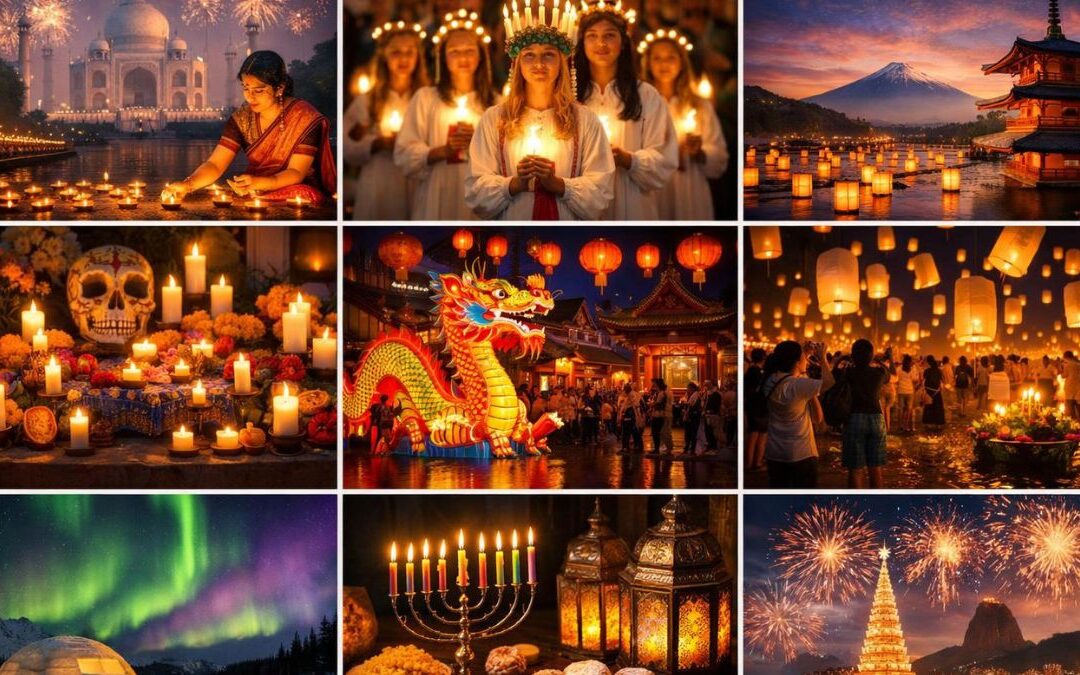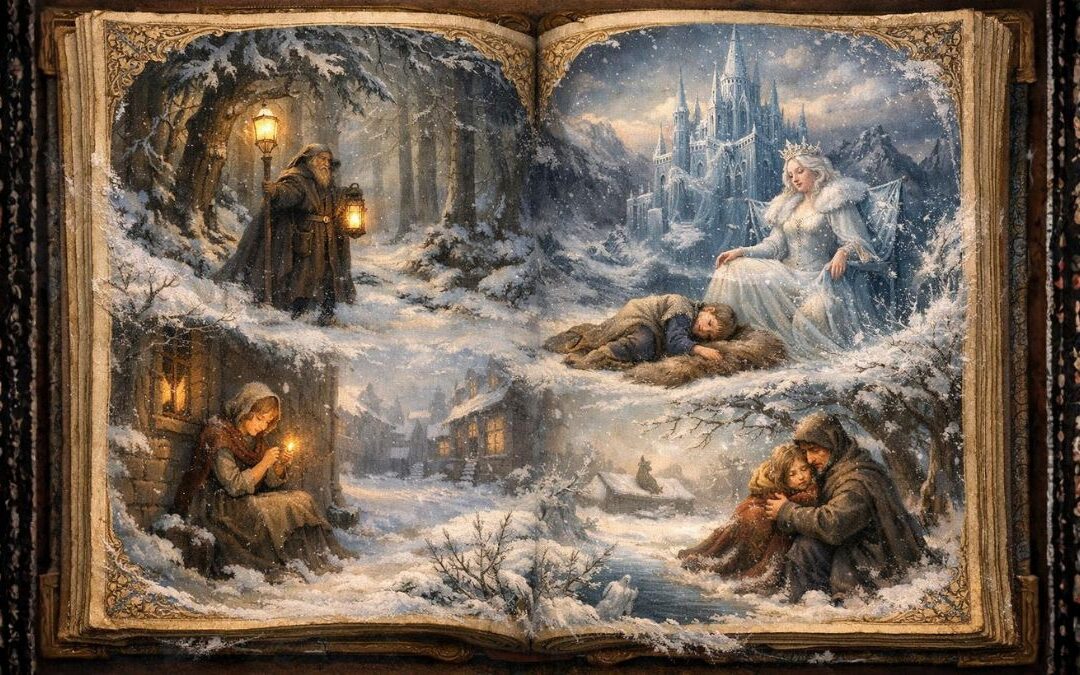Episode Summary
Why do some stories feel like they’re everywhere at once? In this episode, we take a global road trip to track one of the most famous urban legends of all time: The Vanishing Hitchhiker.
We explore how this single, chilling narrative—a driver picking up a mysterious stranger who subsequently disappears—changes its identity as it crosses borders, oceans, and generations. We ask how one story can reflect so many different cultures. Is it a case of a single tale spreading and mutating, or do these stories spring up independently from a universal human fear of the unknown?
Join us as we discover how this global ghost becomes a cultural mirror, reflecting a community’s unique history, deepest anxieties, and most sacred beliefs. From a Hawaiian goddess to a Mexican harbinger of doom, this simple story is a vessel filled with the distinct cultural flavors of every place it visits.
Key Variations of the Vanishing Hitchhiker
We examined how the core archetype of the phantom hitchhiker is adapted in different cultures to deliver a unique message:
- 🇺🇸 The Classic American Ghost: A poignant and chilling tale of a young woman killed in a car crash who is forever trying to get home. The story often ends with a “retrospective token,” like the driver’s jacket being found on her gravestone. It reflects a modern anxiety about the dangers of the road and memorializes tragic accidents.
- Hawaii – Pele, Goddess of the Volcano: On the Big Island, the hitchhiker is often identified as Pele, the powerful goddess of volcanoes. Giving her a ride brings good fortune, while refusing her invites misfortune. The legend transforms from a ghost story into a religious parable about showing respect to the gods and the land.
- Japan – The Sorrowful Yūrei: In Japan, the hitchhiker is often a Yūrei—a ghost tethered to the site of its sudden, tragic death, like a drowning or car crash. This version is not a test or a threat but a sorrowful memorial and a direct cautionary tale, acting as a supernatural traffic sign for a dangerous location.
- Latin America – La Llorona, the Weeping Woman: Here, the legend merges with the terrifying figure of La Llorona, a spirit eternally searching for the children she drowned. She is a figure of transgression and eternal punishment. Encountering her is not a test but a terrifying moral warning against jealousy, rage, and the betrayal of family.
- United Kingdom – The Blue Bell Hill Bride: This famous British version is tied to a specific, documented car crash in 1965 where a bride-to-be was killed. The legend serves as a way for the community to process and memorialize a real-world tragedy, exploring our need to find meaning in random, senseless death.
Focus on Language
Ready to make your language more precise and powerful? Here are the key terms and challenges from this episode’s language focus.
Vocabulary Words
- Archetype: A recurrent symbol, motif, or a perfect example of a certain type of person or thing (e.g., the wise mentor is a common archetype).
- Ubiquitous: Present, appearing, or found everywhere (e.g., “Smartphones have become ubiquitous”).
- Morph: To undergo a gradual and smooth process of transformation (e.g., “The story morphs from a ghost story into a moral tale”).
- Manifest: To appear, or to show a quality or feeling through one’s actions (e.g., “Stress can manifest in physical symptoms”).
- Poignant: Evoking a keen sense of sadness or regret; touching and bittersweet.
- Benevolent: Well-meaning and kindly (from Latin for “good will”).
- Malevolent: Having or showing a wish to do evil to others (from Latin for “ill will”).
- Cautionary: Serving as a warning (e.g., “The legend is a cautionary tale about driving too fast”).
- Lineage: Direct descent from an ancestor; ancestry or pedigree. It can be used for ideas and stories as well as people.
- Verbatim: In exactly the same words as were used originally; word for word.
Speaking Challenge: Comparative Storytelling
Your challenge is to compare two versions of the same story from different cultures.
- Choose a story archetype: Pick a well-known tale like Cinderella, a myth, or a popular movie plot.
- Find a different version: Research a variant from another culture or an older, original version (e.g., Disney’s Cinderella vs. the Brothers Grimm version or the Chinese story of Ye Xian).
- Prepare a 2-minute talk: Using signposting phrases like “In contrast…,” “Similarly…,” “Unlike the first version…,” and “A common thread is…,” explain the key similarities and differences. Focus on how the changes reflect different cultural values or morals.
Writing Challenge: Globalizing a Local Legend
Your challenge is to retell a local story from your own culture for a global audience in 300-500 words.
- The Goal: Adapt a folktale or urban legend that is filled with specific cultural references so that someone from anywhere in the world can understand and connect with it.
- The Toolkit:
- Appositives: Use them to define key terms (e.g., “the djinn, a supernatural creature in Arabian mythology…”).
- Parenthetical Asides: Use dashes or parentheses for quick cultural notes (e.g., “He left an offering — a common practice to show respect — at the shrine.”).
- Modal Verbs: Use words like should, must, and is said to to explain cultural norms and beliefs within the story’s world (e.g., “According to the legend, you should never…”).
Let’s Discuss
We’ve journeyed across the world, but the conversation doesn’t stop here. What are your thoughts? Share your answers in the comments section on our website!
- What is a local version of a global legend that you know? Think about haunted houses, trickster spirits, or monsters in the woods. Share a story from your area!
- Why do you think so many of these legends feature female spirits? Do these stories reflect anxieties about female power, grief, victimization, or something else?
- How important are specific, real-world locations to the power of a legend? Does tying a story to a real place you can visit make it more believable?
- How would the Vanishing Hitchhiker legend change if it were created today? What would this story look like in the age of Uber, Google Maps, and smartphones?
- What is the line between a folktale and a religious story? The Hawaiian legend of Pele is both. Where do we draw the line between folklore and faith?











0 Comments